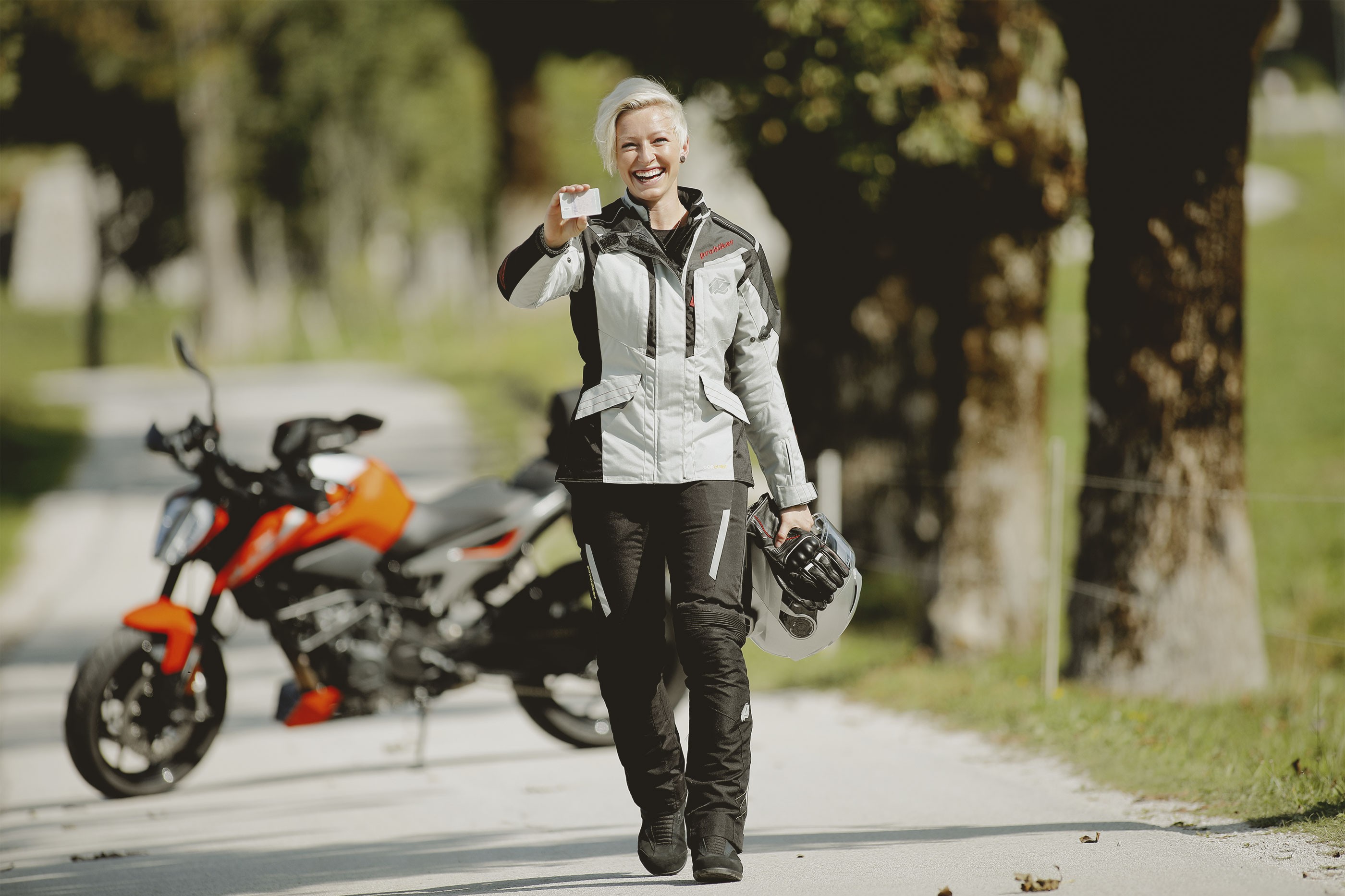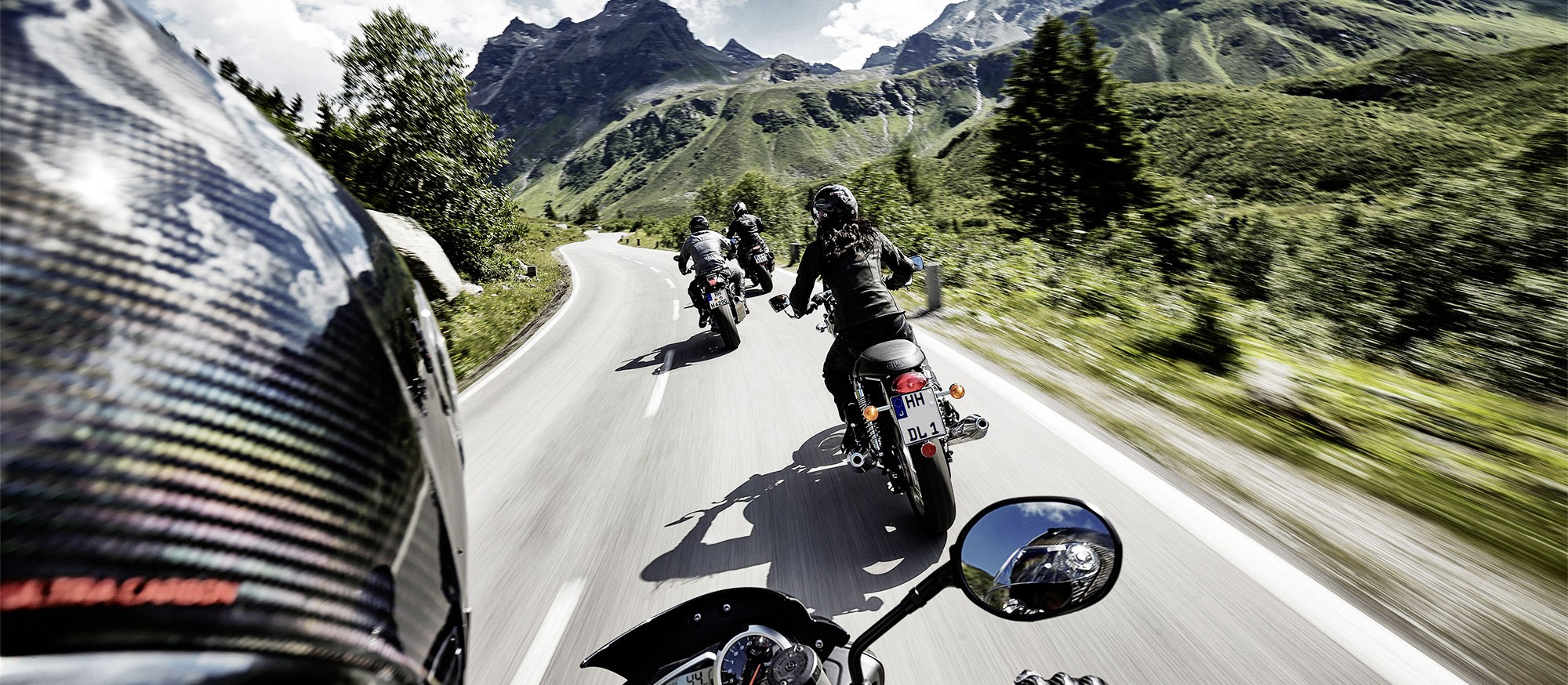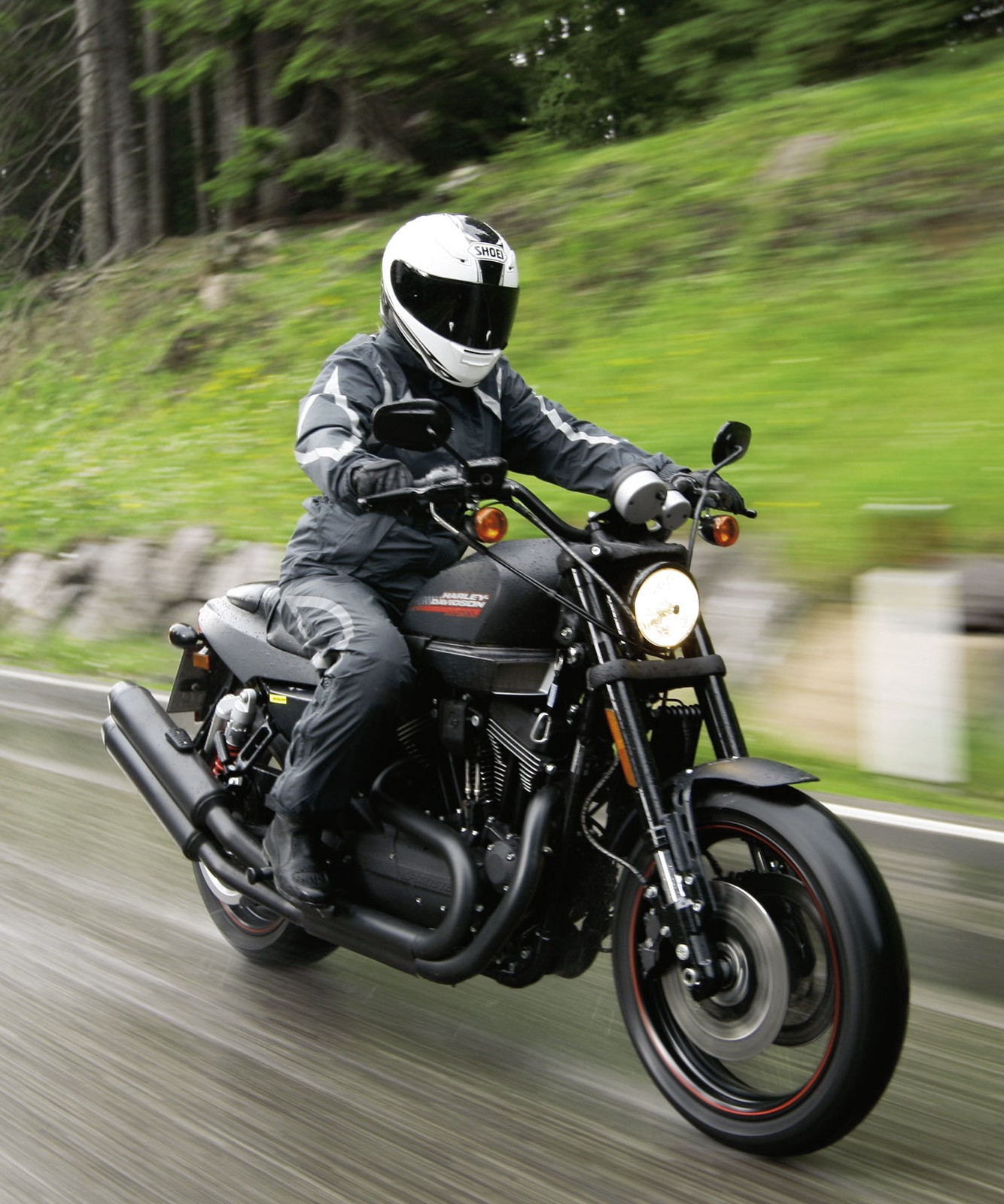Professional tips for newcomers to biking

Have you just passed your motorcycle test? Then, congratulations!
But that certainly doesn't mean there's nothing left to learn. Even the best driving school cannot teach you everything that makes someone a good motorcycle rider. Here we give you a few handy tips which even experienced bikers should regularly remind themselves about.

Take it easy to begin with
Riding a motorcycle is quite demanding, both mentally and physically: non-stop concentration, fast decision-making, unaccustomed movements and the effort of gripping the bike with your legs. So it's hardly surprising that newcomers to biking soon feel exhausted. The answer is to build up the distances you ride gradually, take regular breaks on your journey, and observe yourself. Experienced bikers know when their concentration is starting to fade because they notice that they are making small errors. You should do exactly the same, and look out for any tell-tale signs such as forgetting to use your turn signals or change down a gear; taking a bend too tightly or too fast; overlooking a traffic sign. Ideally you should plan your first tours to be no longer than 2 to 3 hours plus breaks.
Smooth rather than fast
Of course, it's fun to really put your engine through its paces, but constantly giving full throttle inevitably means hard braking as well. This constant speeding up and slowing down puts a lot of strain on an inexperienced rider. It also stops you finding a good rhythm and riding a clean line, all the more so on a demanding or technical route. You should aim to ride smoothly, always looking well ahead and, most importantly, thinking ahead! Remember, steering a clean line on the open road not only makes for a safe and relaxed ride, but actually gets you from A to B quicker, too.
Practice and more practice
Many actions and movements are constantly repeated when you ride a motorcycle, so your aim should be for them to become second nature. This has the immense advantage that you are able to react faster and stay focused on what is happening on the road at all times. The best way to practise is to regularly ride your favourite local route, and always in the same direction. Make a deliberate effort to learn every bend along the route until you have found the perfect line to steer. You could also include some braking and obstacle swerve practice.
Learn to read the road
Discovering new routes and new places is what makes motorbike tours so enjoyable. But there is always potential danger on an unfamiliar road because you often cannot see how tight the next bend is going to be or what the road does after the bend. Fortunately, most roads, and especially minor roads, tend to follow the lay of the land, so you should watch the features of the landscape as well as the road itself. Hedges, rows of trees, power lines, streams – they all give an indication of the route followed by the road ahead. Like we said, an indication, but not proof.

Always ride at your own pace
As a newcomer to biking you can learn a lot by riding with others. But a tour can easily become stressful if the rest of the group get impatient with the slowest rider. Or – as more often happens – the "novice" feels under pressure to keep up with the others for fear of spoiling the trip for them. The solution is to make it clear from the outset that the group will adapt its speed to suit the slowest rider. And you simply have to accept that you are still inexperienced. After all, the others were once beginners, too. In a word: if your fellow bikers start to complain, it's the group that's at fault, not your speed!

Rain is not a major problem as long as you adjust your riding style accordingly.
Riding in the wet
As we all know, rain is not exactly uncommon in central Europe. So you have plenty of opportunity to practise your biking skills on wet roads. Apart from the rain on your visor impairing your vision, water also has the unfortunate effect of reducing the friction between your tyres and the road surface. In other words, your tyres have less grip.
But the good news is: modern sports touring and road enduro tyres achieve a level of grip on wet roads that most novice bikers scarcely utilise even in dry conditions. So don't be put off by a bit of water on the road.
Simply reduce your speed a little, increase your distance from the vehicle in front, and avoid sudden braking, steering or acceleration. Take special care with manhole covers, lane markings and patched road surface.
Biking with a pillion passenger
Biking with a pillion passenger can be great fun, provided you like each other and your motorcycle is big enough for two. But while you are still having to concentrate fully on yourself, your machine and the traffic, it's best not to take on the extra load. Not so much because of the weight of a passenger, but rather the attentiveness and extra responsibility demanded of you as the rider.
It is best to become fully familiar with your motorcycle before you test how it's handling changes with a pillion. It will feel less responsive, steering will take more strength, and braking/overtaking times will be considerably longer. None of this is a problem as such, but it takes some getting used to and means that you have to adapt your riding style. So here are a few basic rules for rider and pillion:

Basic rules for riding two-up
For the rider:
- Move off gently, change gears smoothly, brake early, avoid potholes.
- Avoid sudden or risky maneuvers.
- Remember that braking and overtaking distances are considerably longer with a pillion passenger on board.
- Sharp acceleration, high speeds and leaning hard into bends should always be with forewarning and only with your pillion's agreement.
- To put it in a nutshell, ride in such a way that you would feel comfortable if you were the pillion passenger yourself.
For the pillion:
- Hold on tight, preferably around the rider's waist.
- During braking, support yourself against the tank or hold onto the rear grip (if fitted) with one hand.
- Check your posture – sit upright but do not tense up.
- Observe the road and traffic and think ahead. That way, you will be prepared for bends and braking, and you can take some of the strain off the rider.
- In bends, look over the rider's shoulder on the inside of the bend.
- Maintain body contact with the rider, but do not cling on with a vice-like grip.
- Always sit in line with the rider.
- Never lean in the opposite direction to the rider.
- Always keep your feet on the footrests even when the rider stops briefly.






